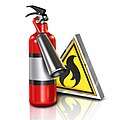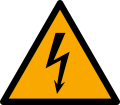This article may need to be rewritten to comply with Wikipedia's quality standards.(October 2024) |
Electrical safety is a system of organizational measures and technical means to prevent harmful and dangerous effects on workers from electric current, arcing, electromagnetic fields and static electricity.
Contents
- History
- Lightning and earthing protection
- Earthing protection systems
- Lightning protection systems
- Physiological effects of electricity
- Electrical safety conductors
- Electrical safety standards
- Lightning protection standards
- Electronics and communications
- Electronic products safety standards
- Communication and high frequency safety standards
- See also
- External links
- Gallery
- References








